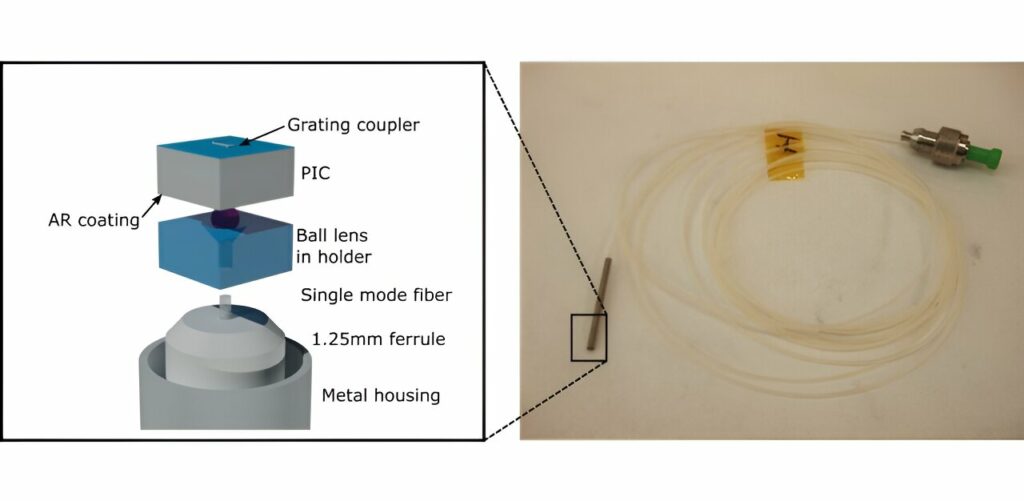Scientists Transform a Compact Photonic Chip into an Operational Temperature Sensor.

Much like electronics, photonic circuits have the potential to be condensed onto a chip, resulting in what is known as a photonic integrated circuit (PIC). While these advancements are more contemporary compared to electronics, this domain is progressing swiftly. A key challenge, however, lies in transforming a PIC into a fully operational device. Achieving this necessitates the implementation of optical packaging and coupling strategies to efficiently introduce light into and extract light from the PIC.
As an illustration, in the realm of optical communication, it is imperative to establish a linkage with optical fibers, serving as conduits to carry light pulses across extended distances. Conversely, the PIC might accommodate an optical sensor that relies on external light for its readout.
As an example, within the domain of optical communication, creating a connection with optical fibers is crucial, acting as channels to transmit light pulses over significant distances. Conversely, the PIC could host an optical sensor dependent on external light for its readout.
Given that light on a PIC travels through extremely narrow channels with sub-micrometer dimensions, known as waveguides, achieving optical coupling poses a significant challenge, demanding meticulous alignment between the PIC and external components. Moreover, the optical components are delicate, underscoring the critical importance of proper packaging for the PIC to yield a dependable device.
A research team led by Prof. Van Steenberge and Prof. Jeroen Missinne at Ghent University
This article is republished from PhysORG under a Creative Commons license. Read the original article.
Do not forget to share your opinion with us to provide you with the best posts !




0 Comments